Definition - “Normally always *cap, a velvet cap in the holder’s individual house colours with gold or silver braid, awarded as School second XV colours (C19 to today). Originally, when the whole house played in a match, most of the house, including all the fags, remained behind the goal line to keep goal. Only the leading players ‘followed up’ the ball. The velvet cap became a mark of distinction awarded by the Head of House.”[1]
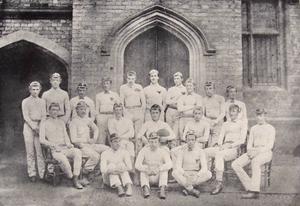
[1] Glossary in "With a fine disregard...": A Portrait of Rugby School, November 2006.
Origins
The original ‘cap’ was created by the boys at Rugby School, to mark the visit of Queen Adelaide in 1839. The velvet cap, in royal crimson, with gold braiding, was worn by the boys of School House, and quickly spread to the other houses in school, to become known as the ‘Following-up’ cap.
A potted history of the cap
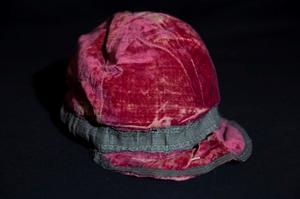
After School House introduced the caps in 1839 others soon followed and by c1845 all the houses had a cap in their house colour (a tradition which survives today we are unsure about the cap tradition of extinct houses). When other houses such as Tudor and Sheriff were established, they also had their own caps. Originally caps were worn during matches.
The ‘International cap,’ where sportsmen and women are ‘capped’ for their country originates from Rugby School. Half of the England team of 1871, at the first international match, were old boys of Rugby School and they wore their school caps for the occasion thus creating the tradition.
Until the 1920s boys would have the matches they played embroidered into their caps.
According to an article published on 21 February 1943 in The Times, in the early 1930s Following-up caps were abolished and the XV cap was substituted for them. Obviously, this didn’t last long and the Following-up caps were reinstated, though possibly as an award for being on the 2nd XV Team like they are today. The same article also claims that 1943 was the centenary year of Following-up Caps.
Not much has changed about the Following-up caps since then, although a Captain of Football Cap has been introduced. Following-up caps are no longer worn during matches, caps are worn on the day they are awarded which is the day of the Guest Match in Advent Term.
Changes to design
Over time the manufacturer of the cap has changed which has led to slight but noticeable changes in colour, design and fit. We don’t know who the original designer was, the first label to appear around the 1880s was Over and Sons. The next manufacturer was Veasey and Son in the 1950s and 1960s with Salters appearing in the mid to late 60s. Around 2015 the manufacturer changed and then again in 2021/2022.[2]
The 1st XV cap has also seen some changes, originally it was a navy cap with no decoration or braiding. Silver braiding and the 1st XV crest were added to the cap c2015. The braiding on the peak of a XV cap is to symbolise how many years someone played in the 1st XV.
[2] A list of how different Following-up caps have changed can be found at the end of this document
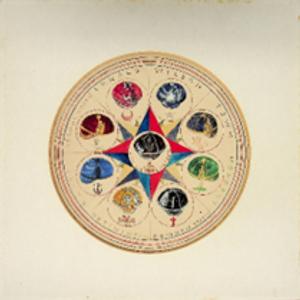
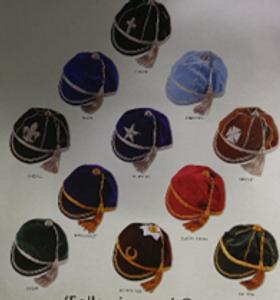
Caps c1850s Caps c2015
Braiding and Crests
In 2006 Rugby School published "With a fine disregard...": A Portrait of Rugby School, this book explained a number of the School’s traditions including the reason why some of the Following-up caps have gold braiding.
“Sir Ewen Fergusson (School House, 1945–51) records that in School House it was believed that tradition determined the braid on each house’s [F]ollowing-up cap through a hierarchy – of course with School House at the top, to commemorate an alleged seven successive years as Cock House[3] in remote history. However, the Hon. Neil Turner (School Field, 1954–58) believes that in 1958 he spun the legend that gold braid (then sported by School House, Town and Cotton) indicated three successive years as Cock House; certainly, School Field was promoted to gold that year.”[4]
Another difference between the cap is the embroidering of crests on the front. Originally only the silver caps had a crest on except Kilbracken and no gold caps had crests until School Field changed to gold in 1958. There is no evidence in the archives to suggest why some caps have a crest while others do not. For some time, it was believed to indicate that they had won three Cock House Matches. If this was true then School House, Town and Cotton would also have crests on their caps. Another suggestion has been that some have crests to distinguish themselves from houses with similar colours or that crests which are missing were too complex for earlier manufacturers to create or would have been too heavy on the cap. This mystery and why Bradley used a Maltese cross rather than a double headed eagle may never be solved, but we can have fun trying to.
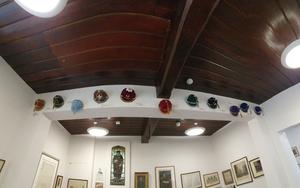
[3] Cock House Match n. 1850 to today, the final of the relevant major sport’s inter-house competition; the winner at football is Cock House.
[4]Glossary in "With a fine disregard...": A Portrait of Rugby School, November 2006.
List of changes to individual caps (before 2022)
| House | Early Design | Changes |
| Bradley | Artwork from the 1840s/1850s suggests the cap was originally an orange/red colour or mustard yellow. The style of the Maltese Cross was thin. |
|
| Cotton | Artwork from the 1840s/1850s suggests this was a green cap with gold braiding. |
|
| Kilbracken | Artwork from the 1840s/1850s suggests this was a sky-blue cap with silver braiding. |
|
| Michell | Artwork from the 1840s/1850s suggests this was a dark/chocolate brown with silver braiding and a Fleur-de-Lys on the front. |
|
| School Field | Artwork from the 1840s/1850s suggests this was a red cap with a small white star on the top and a silver crescent on the front and braiding. |
|
| School House | This was the first cap to be created. Worn in 1839 it was red with gold braiding around the edge. |
|
| Sheriff | Sheriff was founded in 1930 and since then appears to have had a green cap with silver braid and no piping. |
|
| Stanley | Artwork from the 1840s/1850s suggests this was a black/very dark navy coloured cap with silver braid and cross on the front/ |
|
| Town | Artwork from the 1840s/1850s suggests this was a blue cap with gold braiding and piping. |
|
| Tudor | Tudor was founded in 1893 and since then appears to have had a blue cap with silver braid. |
|
| Whitelaw | Artwork from the 1840s/1850s suggests this was a dark purple/violet cap with silver Braiding and a pentagonal star on the front |
|
| 1st XV Cap | The School XX was established in 1867 and became the XV in 1876. Team colours were first awarded in 1870. Not sure when the teams were awarded caps from but they were in place by the 1930s.
The original cap was dark blue and similar in style to a cricket cap with no braiding. Made of felt rather than velvet. |
|
Awarding the cap
From 1839 if you were allowed to ‘follow-up’ for the School team then a house Following-up cap was awarded. Originally the School team was made up of players from all houses and could be the whole school playing at one time, until 1867 when the team became the XX and later in 1876 the XV. Colours for the XV were introduced in 1870, this could have included a specific XV cap but there is no evidence to suggest that they were introduced at this point. By the 1930s there was a specific XV cap and the School tried to remove the house caps (according to an article in The Times in 1943) this did not last long. When the house caps were reintroduced (1930s) it is likely that at this point the 2nd XV players were awarded a house cap and 1st XV a XV cap. All members of the XV (in the printed team list) were awarded a cap and this continued to the present day. In recent years, the 1st XV team captain has been awarded a captain of football cap.

